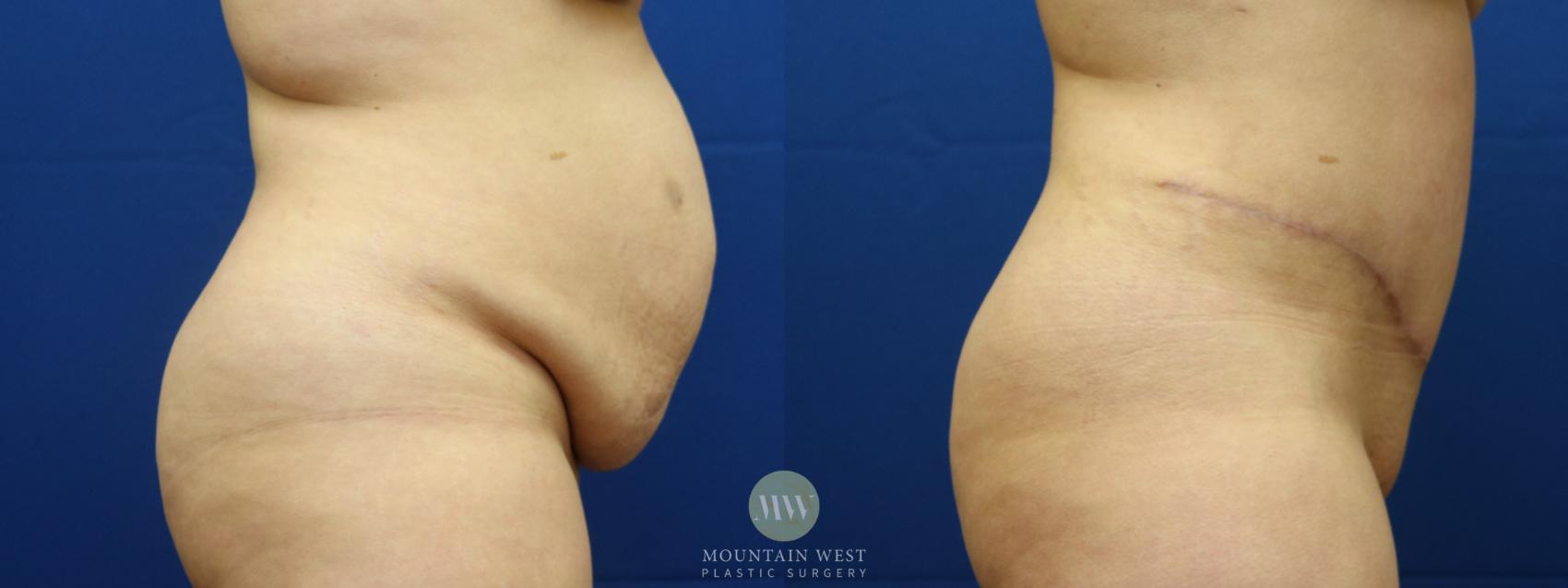It’s safe to say that plastic surgery patients aren’t fond of surgical drains used by many surgeons following tummy tuck procedures. Questions about drains are among the most commonly asked on sites such as RealSelf by people considering abdominoplasty, or tummy tuck. Post-op drain maintenance—which involves cleaning the drains of blood and fluid a couple of times each day for about a week—is not a pleasant task.
Patients travel from all over Montana, Idaho, and Wyoming for a tummy tuck at Mountain West Plastic Surgery because we rarely use drains. In this blog post, I’ll explain how the drainless tummy tuck technique we use enables us to avoid inserting “dreaded” drains.
Why are drains used after a tummy tuck?
For years, surgical drains were a necessary annoyance that helped prevent the accumulation of fluid in the space between the skin and muscle following a tummy tuck. That buildup of fluid potentially causes a complication called a seroma. A seroma is the most common complication following tummy tuck surgery, and traditionally, drains have been used to prevent them. Seromas aren’t necessarily dangerous when treated, but they can delay recovery, require additional treatment, and increase costs. There is also the risk of infection.
What is a drainless tummy tuck?
If you’re surprised that there is such a thing as a “drainless” tummy tuck, you’re not alone. Drainless tummy tucks combine liposuction with a traditional tummy tuck and a layered suturing technique that is often called the “quilting” technique. Because the need for drains is created by the space where blood and fluid can pool after surgery, this specialized technique involves making internal sutures to pull together tissues and close those spaces.
Is a drainless tummy tuck safe?
When performed by a board-certified plastic surgeon trained to use progressive tension sutures, drainless tummy tuck procedures are safe and effective. A study involving 400 patients published in the Aesthetic Surgery Journal not only concluded that using quilting sutures effectively minimizes the risk of a seroma, but the authors also wrote they believe the use of drains may eventually become obsolete. That hasn’t occurred yet, however, because many plastic surgeons don’t have the necessary training to perform the advanced “no-drain” tummy tuck method.
Combining a Tummy Tuck With Other Procedures
Even though many patients get abdominoplasty as a standalone surgery, it’s commonly included as part of a comprehensive body contouring operation typically called a Mommy Makeover. This procedure is popular among women whose bodies have undergone dramatic changes after having children. Besides having excess abdominal skin or protruding bellies that can’t be improved through exercise or dieting, patients’ breasts often sag and lose volume. Breast enhancement procedures such as a breast lift with implants combined with a tummy tuck and liposuction can truly transform a woman’s shape.

You can read more about the pros and cons of combination surgery here, and you can see the difference a tummy tuck can make by viewing before-and-after photos in our gallery featuring some of our actual patients.
Take the Next Step!
If you want to discuss if a tummy tuck is right for you, request a consultation at our Kalispell, Montana, practice using the online form, or call us at (406) 609-0210 to schedule an appointment.



Leave a Reply